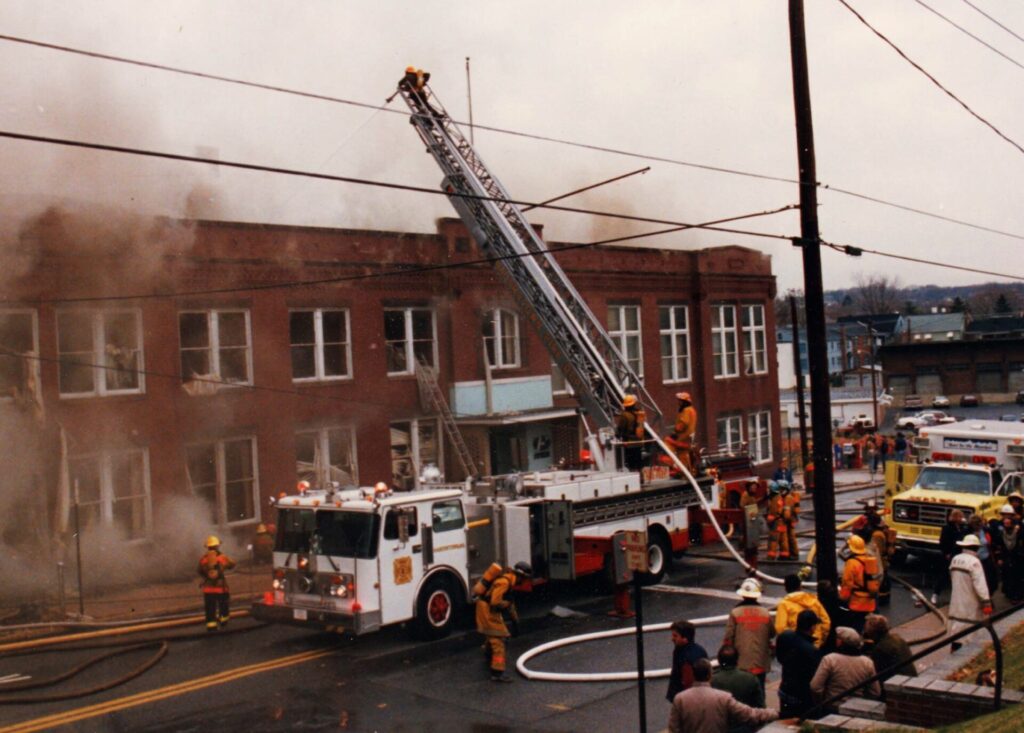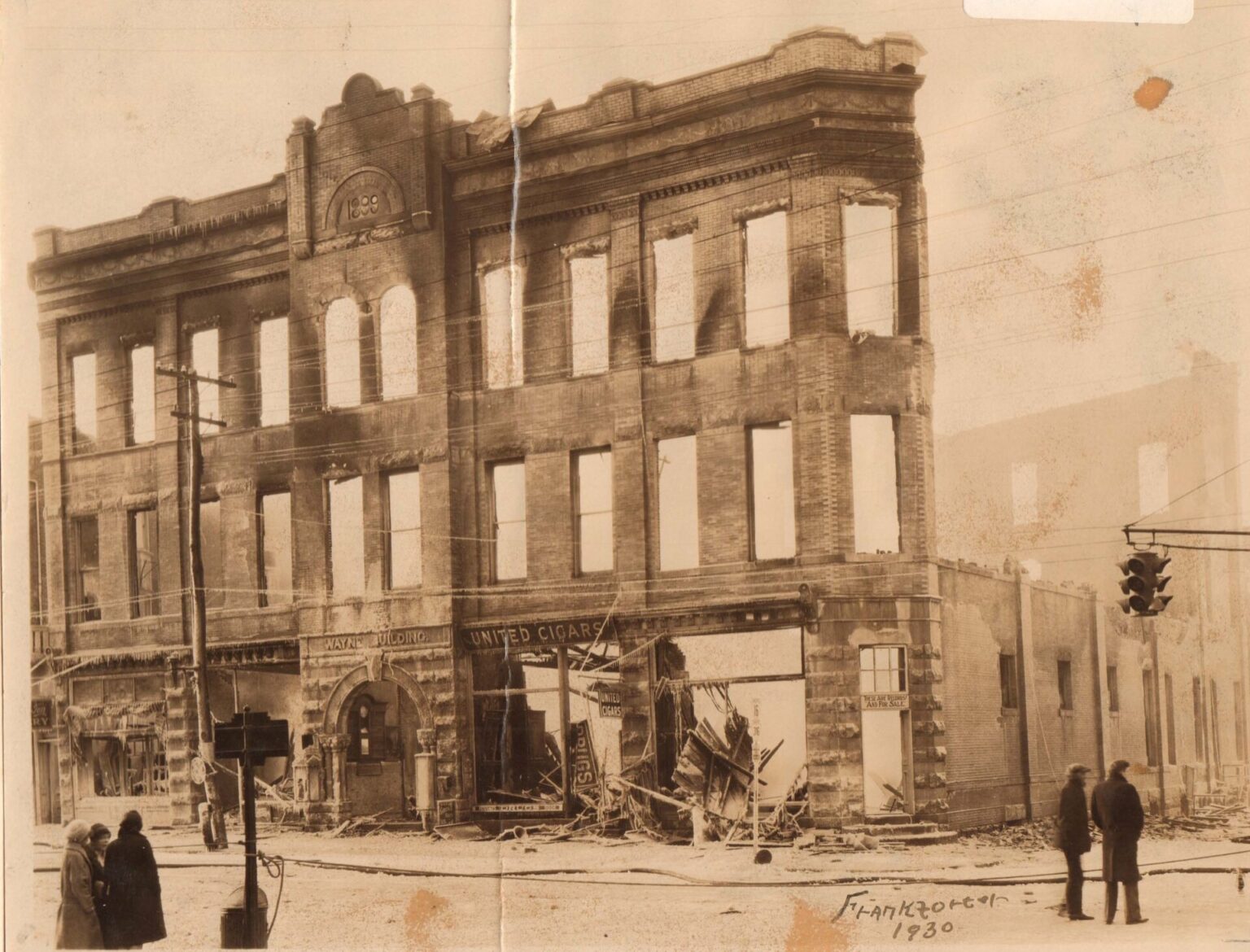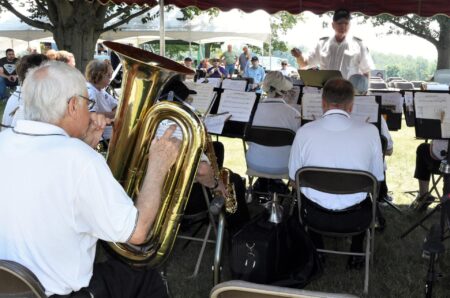In human societies, fire is simultaneously a friend and a foe. Most days, this natural force is safely harnessed to heat homes, cook food, and power transportation. During winter, people gather around indoor hearths to bask in warmth and hear pleasant crackling of firewood.
But on darker days- through mechanical malfunction, carelessness, or the evil hand of an arsonist- fire escapes normal boundaries and takes on its own life. Then, it becomes a beast. It hides in crawl spaces and ventilation shafts. Fires often break out in depths of the coldest nights when people are most vulnerable. This unfeeling menace can strike anywhere, putting lives and property in sudden peril.
Throughout Waynesboro’s history, major fires have caused much heartache and loss. Sometimes, these disasters caused the tragic goodbye of a beloved individual or landmark, or marked the sad end of an era. During the 1900s, many devastating fires erupted in Waynesboro’s symbolic heart: on Main Street. When those awful times arrived, citizens and firefighters faced the most dangerous minutes of their lives.

1:33 am, January 19, 1930
On a frigid winter night, the temperature recorded at -6 degrees, the Wayne Building caught fire. At the time, the structure was the pride of Waynesboro- when built in 1899 it was the largest building in Franklin County. By 1930, the Wayne Building thrived with in-house residents and businesses.
As fireman attempted to save the structure, heavy ice formed on everything they doused, creating further danger. Locals gave firefighters warm gloves and hot coffee. Despite valiant efforts, when the fire was finally extinguished only the north and south walls remained standing. The Wayne Building was a total loss. Both remaining walls were pulled down the next day. Fortunately, everyone escaped the fire, possibly caused by a gas leak.
At least 14 Wayne Building businesses were wiped out, including a beauty shop, dentist, shoe repair, photography studio, and a newspaper. In what would become a post-fire trademark in Waynesboro, owner J.J. Oller promised to rebuild. That grand replacement building still stands today, an iconic local landmark at Main and Potomac Streets.
12:55 am, August 24, 1940
In perhaps the most spectacular fire in Franklin County history, the Geiser Company plant burned. The facility occupied an entire city block- where the Post Office and former Acme grocery building now stand. This fire marked the end of a Waynesboro industrial era. Geiser had already declared bankruptcy and vacated the building, but in 1940 the complex was still an impressive landmark.
That August night, Mrs. Burger heard noises and thought someone tread on her Second Street porch. Walking outside, she immediately saw flames and alerted the fire company. The Geiser blaze quickly took off, and when the fire reached oil tanks it exploded into what local observers described as a “blazing inferno”, with “blistering heat”. Flames roared into the sky so high they were seen forty miles away. Despite multiple fire hoses strung nearly a half-mile away, saving the Geiser structure proved impossible. Later that day, all that remained was black smoldering ruins.
Like other industry in town, Geiser had suffered earlier fires and rebuilt. This blaze, however, possibly caused by a careless welder, signaled the end for Geiser in Waynesboro. The only remaining building from the company’s heyday is a former office building at Second and Walnut Streets.
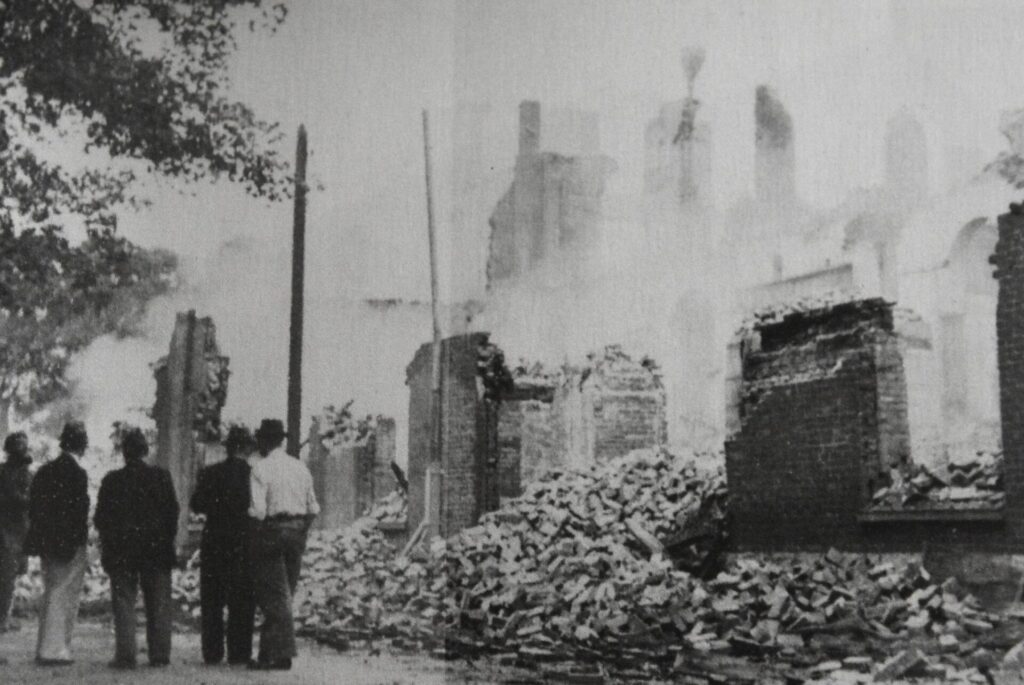
2:52 pm, October 3, 1974
A massive fire, with likely the worst risk ever to Waynesboro lives, occurred at the Fairview Avenue School in October, 1974. The handsome brick building was built in 1927 and contained 10 elementary classrooms, with a cafeteria, art room, and gym in the basement. 300 students attended school there.
That autumn afternoon, a teacher discovered a fire that started in a fourth-grade cloakroom. Some students were out enjoying recess, but other children were still inside the school. Alert teachers quickly put a fire drill into action and all kids left the building within 40 seconds. Those students were also well prepared; they had created fire prevention posters that same week.
When help arrived, flames had already spread secretly through air ducts and a local firefighter noted their challenge: “the fire had a head start.” A strong north to south wind also conspired to whip flames higher and smoke was seen as far away as Fort Loudon. Dr. William Leary, the district’s School Superintendent, rushed to the scene. When he saw Fairview School totally engulfed, he bowed his head and said: “We’ve lost it”. It was the first school fire in Waynesboro history. When the disaster ended, only the four exterior walls remained intact.
Sadly, it was determined a student set the fire. Local resources were put into action and temporary classrooms were set up to keep kids in school. One parent said after the tragedy: “Every time I look at my daughter, I want to thank those teachers from the bottom of my heart”. Like the Wayne Building, the Fairview Avenue School was rebuilt, and is still in use today.
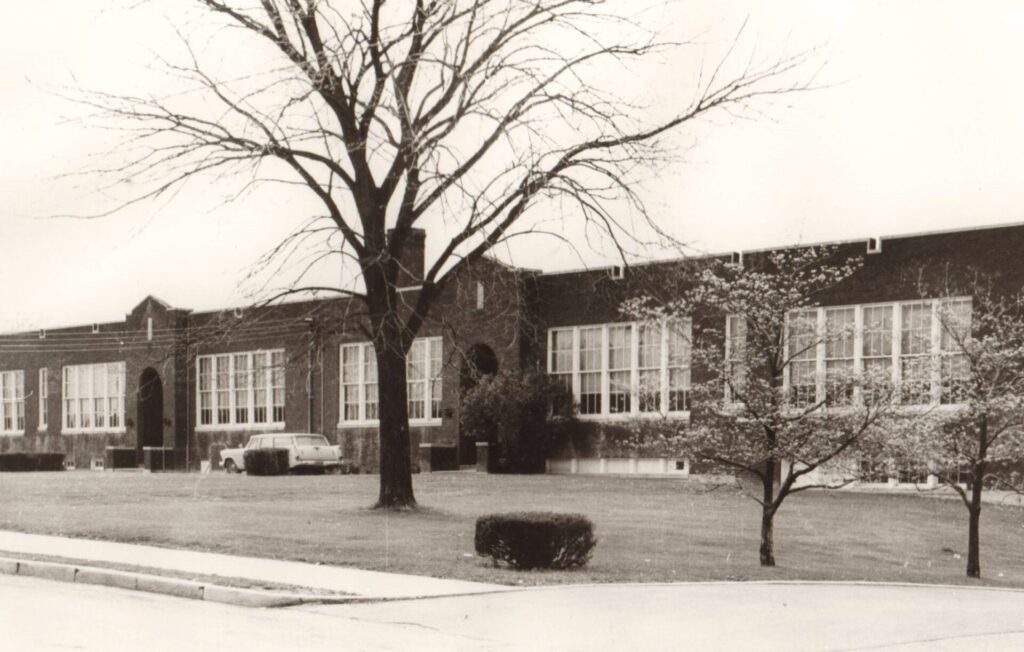
2:32 am, December 3, 1976
On this date in Waynesboro history, another cold night with temperatures hovering near zero. The Anthony Wayne Hotel was a Main Street landmark. The 88-year-old building was past its prime, once known as the Leland Hotel. But the charming 65-room property was still in business, and sat proudly at Main and Cleveland Avenue.
In the middle of the night, a fire started in a fourth-floor electrical box. The flames found a ventilation duct and quickly spread upward, undetected at first. When the alarm sounded, residents and guests were roused from sleep and rushed from the building. The blaze threatened the building’s north-facing front side. Like the earlier Wayne Building fire, water from fire hoses turned into instant ice. But firefighters expertly contained the fire, damage limited to the upper floor and roof. Although ice coated the hotel’s lobby, the Anthony Wayne building was saved.
After the fire, an outpouring of community support helped Anthony Wayne’s residents. Six people were moved to the YMCA building. Others were temporarily sheltered through the Red Cross and local families. The building’s owners published a public letter after the disaster. “Thank God for the volunteer firemen”, they said. Today, the former Anthony Wayne Hotel is beautifully restored and home to Leland of Laurel Run, a facility for senior residents.
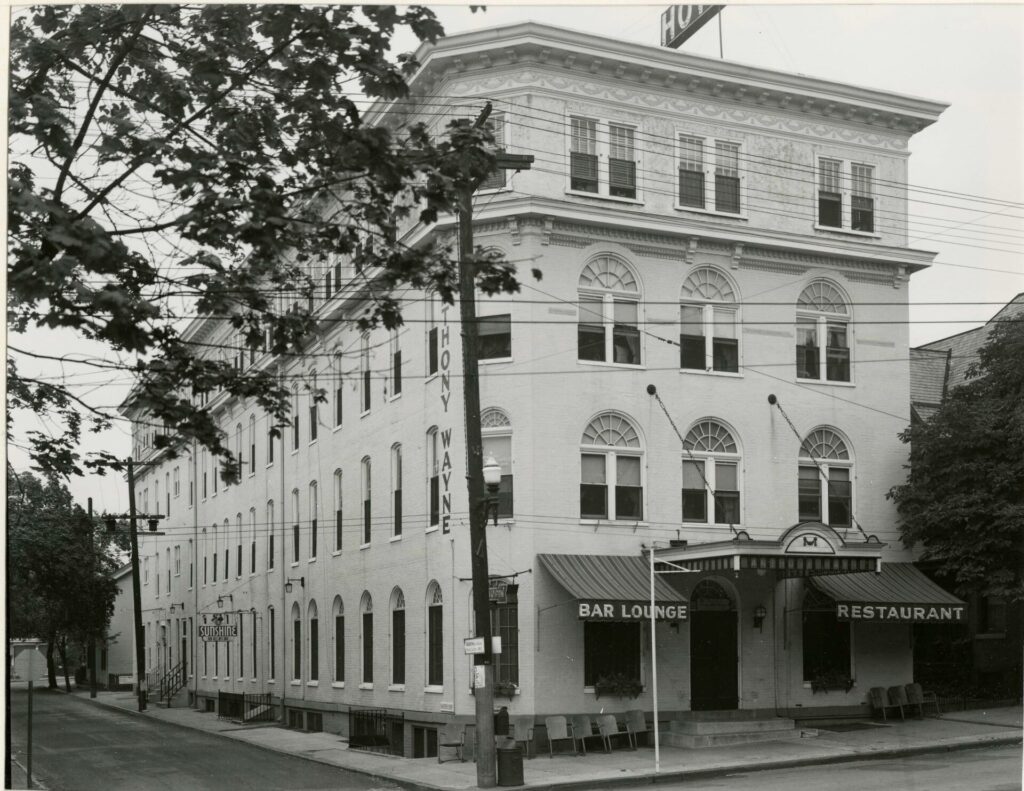
6:03 am, November 19, 1988
Smell of smoke on West Main Street was the first indication that something was awry on a cold Saturday morning in Waynesboro. The Christmas parade was scheduled that day, and participants would later gather in Frick Company’s parking lot.
A Frick janitor spotted a fire in their office building’s basement, and that blaze had initially hidden its presence inside dropped ceilings. When it was over, Frick Company’s fire was the largest in Waynesboro history in monetary damage and number of firefighters called to fight it.
Firemen battled the fire in sleet and freezing rain. Locals brought food and dry clothes for the firefighters, who braved intense heat and thick dark smoke. The nine-alarm fire required 53 pieces of apparatus and 250 firemen from five counties. “The heat was unbelievable”, the Waynesboro Fire Chief said. An estimated 1.5 million gallons of water was poured into the burning building. At one point, water was collected from local creeks to give hydrants time to rebuild pressure.
Two firemen were slightly injured conducting their dangerous work. Ironically, Waynesboro Hospital was prepping that same day for a mock disaster, but fortunately saw only a few real-life patients from the Frick fire. Due to the firefighting’s gigantic scale and immense manpower on the scene, the Christmas parade was canceled. But firefighter’s efforts couldn’t save the building.
Post-fire investigation found the blaze had multiple origins and was ruled arson. The building had to be demolished. Frick Company (now Johnson Controls) later built a new office on their corporate campus. A thankful Frick employee said after the fire: “People really came together in a time of crisis”.
Looking back at these five devastating fires, it’s remarkable that no lives were lost. That result is certainly due to multiple doses of good luck. But it is also a testament to the courageous people who inhabited and owned these buildings, and to local firefighters who performed with incredible skill and courage. When the next disaster strikes, and Waynesboro is tested again, those same elements will hopefully keep the community safe and power the resilience to rebuild stronger than before.
